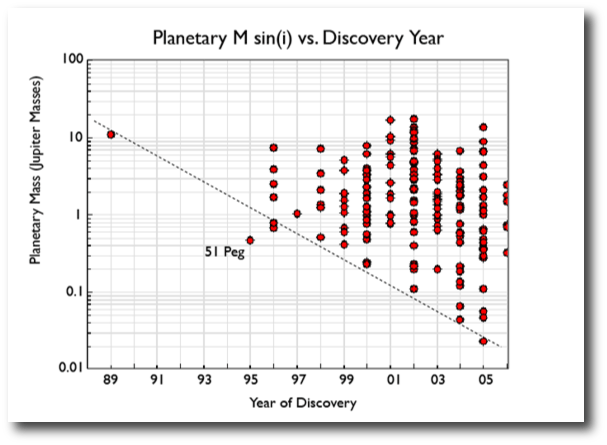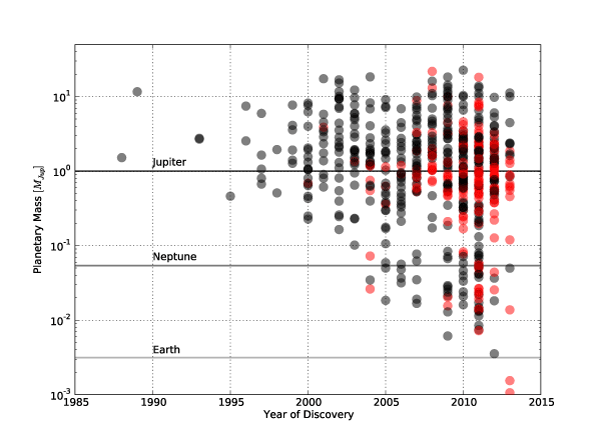One prediction regarding exoplanets that did hold true was the Moore’s-Law like progression toward the detection of planets of ever-lower mass. More than seven years ago, not long after the discovery of Gliese 876 d, the plot of Msin(i) vs. year of discovery looked like this:
With a logarithmic scale for the y-axis, the lower envelope of masses adhered nicely to a straight line progression, pointing toward the discovery of the first Earth-mass exoplanet sometime shortly after 2010. The honors went, rather fittingly, last year, to Alpha Cen B b. Here’s an update to the above plot. Planets discovered via Doppler velocity only are indicated in gray, transiting planets are shown in red…
The data for the plot were parsed out of the very useful exoplanets.csv file published at exoplanets.org.
And wait, what’s going on with that point in 1993? See http://en.wikipedia.org/wiki/Pollux_b.




From Xavier Bonfils:
And if you add the planets discovered by timing to the plot, the transit method has apparently finally caught up with the early 90s: PSR B1257+12A, meet Kepler-37b.
Pingback: Wie heeft eigenlijk de eerste exoplaneet om een zonachtige ster ontdekt? – deel 2 | Astroblogs
That’s some very loud pointing away from those little pink fellows at the bottom right. They don’t seem to be in your linked csv.
Or am I missing something obvious?